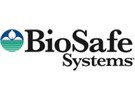ZeroTol® 2.0 by BioSafe Systems is a broad-spectrum algaecide/bactericide/fungicide that was also the company’s first product when it began in 1998.
OMRI-Listed ZeroTol 2.0 is a broad-spectrum contact oxidizer of fungal, bacterial, and algal spores and cells. It controls numerous pathogens and pests, including algae, anthracnose, Botrytis, Pythium, Fusarium, Xanthomonas, bacterial spots and rots, and many more.
“With new and emerging markets in horticulture and agriculture such as controlled environment agriculture (CEA), we’ve seen the popularity of ZeroTol 2.0 reach new heights,” says Eric Smith, National Horticulture Sales Manager at BioSafe Systems.

Unlike other synthetic and systemic fungicides that work from the inside out to protect plants, ZeroTol 2.0, which contains the active ingredients hydrogen peroxide and peroxyacetic acid, offers “foliar disease control at its finest by killing disease spores and inoculum,” Smith explains.
Smith emphasizes that ZeroTol 2.0 isn’t intended to replace long-standing synthetic active ingredients such as chlorothalonil, propiconazole, T methyl, and many others used to combat various diseases systemically. He knows those products work well to control disease and that growers need them.
Smith advises growers to use ZeroTol 2.0 in tandem with synthetic chemistries to get even better control. “ZeroTol 2.0 isn’t replacing those products because growers know and trust them, and they work very well,” Smith says. “But ZeroTol 2.0 can complement those products well.”
“With ZeroTol 2.0, growers are adding anti-microbial activity to the tank mix in addition to the systemic activity that comes with synthetic products,” Smith says.
Smith emphasizes the broad-spectrum control of ZeroTol 2.0. “To have the sanitizing aspect of ZeroTol 2.0 is a huge benefit to broadening the spectrum of control of other active ingredients that work on specific pathogen groups,” he says. “Then you can broaden the spectrum and get bacteria, other fungi, molds, yeasts, and algae as well as your targeted systemic activity of that other product.”
ZeroTol 2.0’s activity is not unlike someone sanitizing his or her hands every so often to kill bacterial spores or viral cells, Smith says, noting that the same thing occurs on a plant’s surface.
Resistance Management
When synthetic chemistries are overused and aren’t rotated, they can be subject to mutational resistance. Smith says a major benefit of ZeroTol 2.0 is it can help prevent resistance of diseases to synthetic chemistries. It also improves the efficacy of those chemistries and helps them maintain their strength and performance longer.
Smith says that ZeroTol 2.0 will oxidize susceptible and resistant spores so they can’t mutate. “As an oxidizer, it tears the cells apart,” he explains. “Tank mixing with ZeroTol 2.0 will stop mutational resistance in its tracks.”
As a bactericide, ZeroTol 2.0 is also being used more frequently by growers because copper, which had been the go-to bactericide for decades, is losing efficacy due to mutational resistance with bacteria such as Xanthomonas, according to university data and anecdotal evidence, Smith says.
“Copper has been over-sprayed for decades,” he adds.
For more information:
BioSafe Systems
biosafesystems.com
